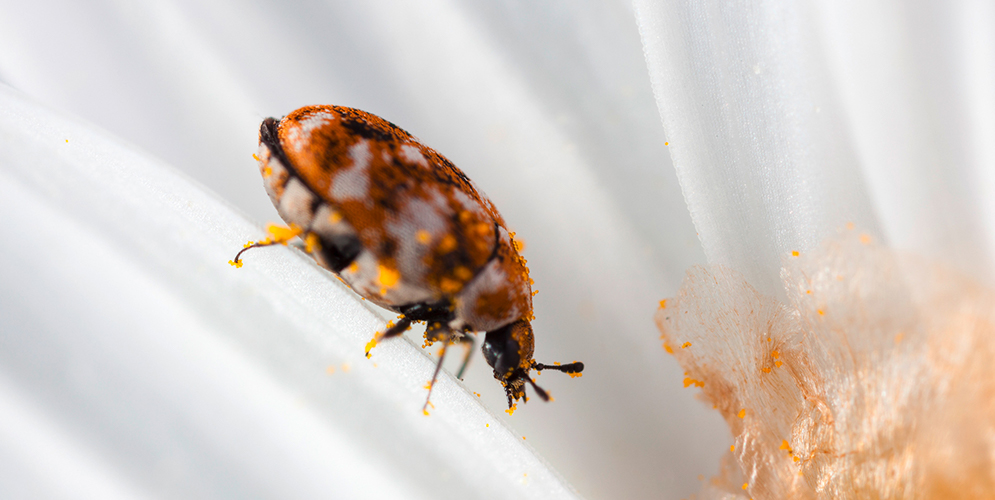Varied carpet beetle
(Anthrenus verbasci)
Biology:
The varied carpet beetle, which belongs to the dermestid beetles family, is approximately 3 mm long and very colourful. Its wing covers feature white, yellowish and brown markings, which are made up of scale-like hairs. The light-brown larvae, which are sensitive to light and up to 5 mm long, are completely covered with hairs and have long tufts of dart-shaped hair on their rear end. Once they have emerged, the beetles look for light and you often find them near windows (window frames). In the spring and summer, they also eat pollen on flowers outdoors, before the females fly back inside to lay their eggs (they actively enter buildings). The larvae can hibernate outdoors, even in harsh winters.
Closely related species, such as the museum beetle (Anthrenus museorum) or the common carpet beetle (Anthrenus scrophulariae) are similar to the varied carpet beetle in terms of development, lifestyle and damage caused. The larvae of the different types can be distinguished by their species-specific dart-shaped hairs, for example.
Damage:
As the larvae of the beetles live predominantly off animal products (wool, hair, feathers, dead birds and insects, furs, bones and leather, etc.), they cause a great deal of damage to textiles, furs, etc. They can also be extremely destructive to stuffed animals (museum exhibits) and in insect collections.
The varied carpet beetle also poses a danger in terms of hygiene as the characteristic dart-shaped hairs of the larvae can trigger allergies, as with the Khapra beetle, etc.


